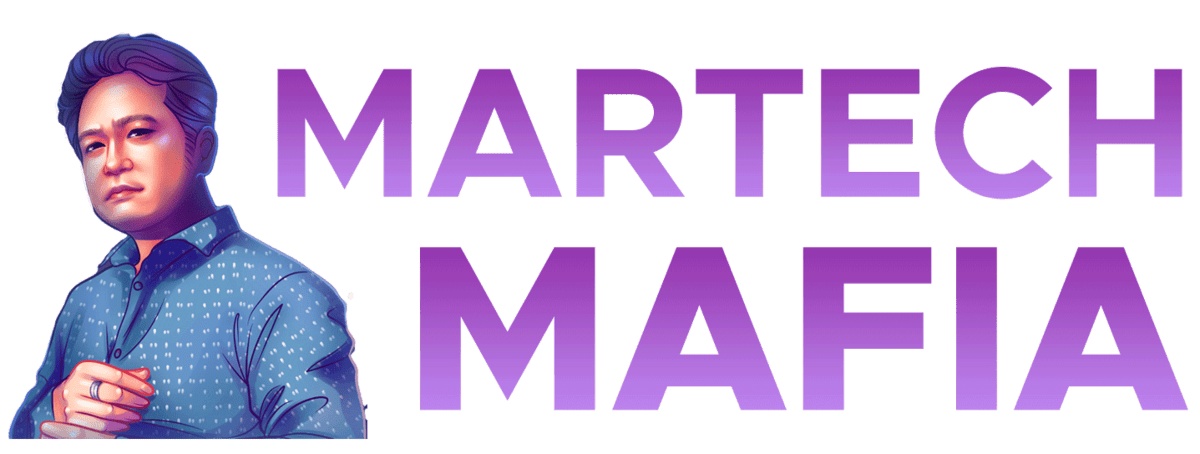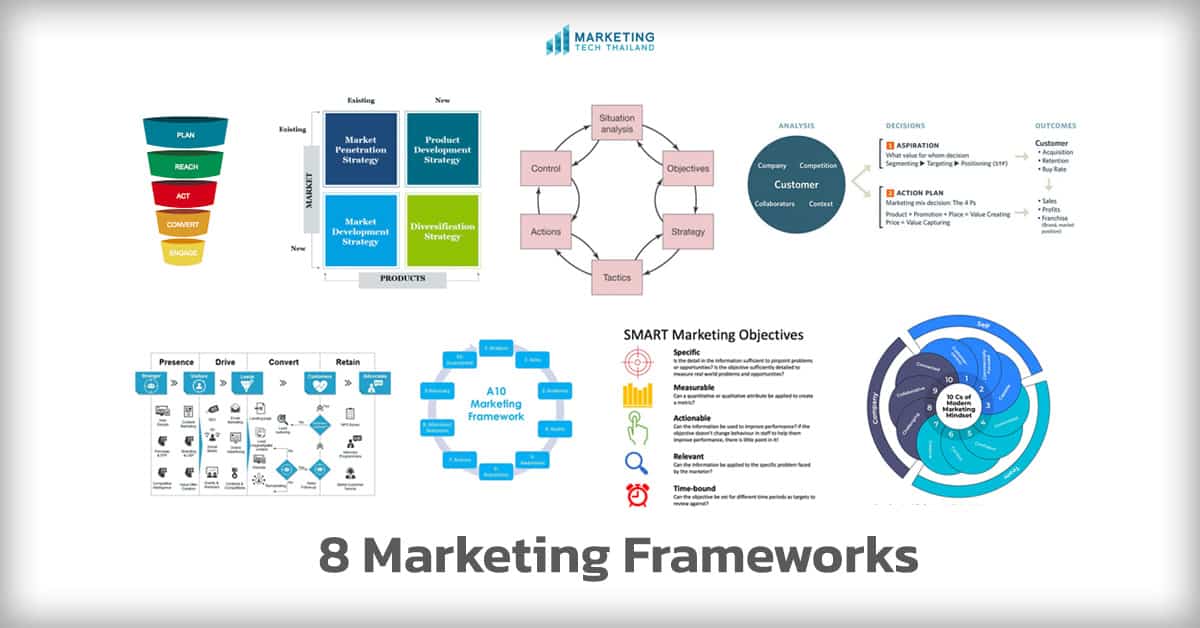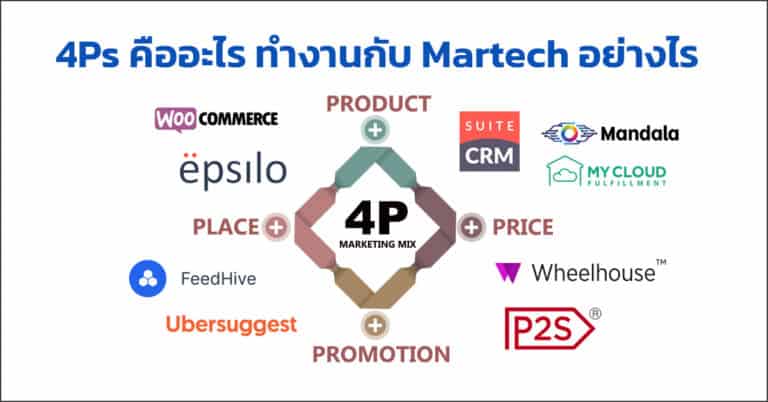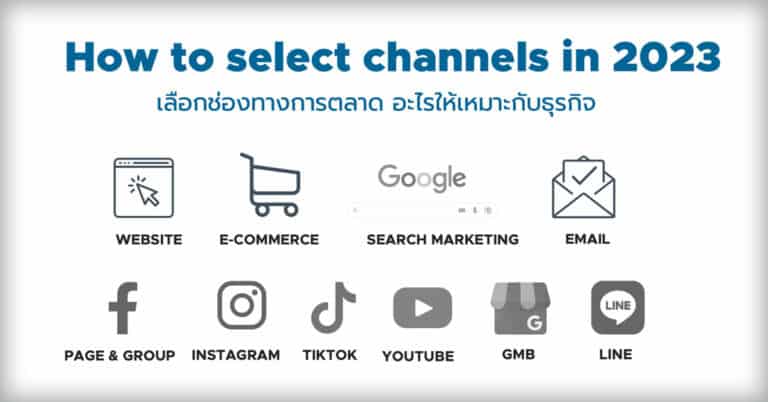All Classic Marketing Frameworks from 1957 – 2021
This post is also available in:
 Thai
Thai
Before operating tasks, Marketing frameworks are adopted to overview the big pictures. Many of them are developed by marketing professionals and they are still applicable in 2021.
1. RACE Models Developed by Dave Chaffey
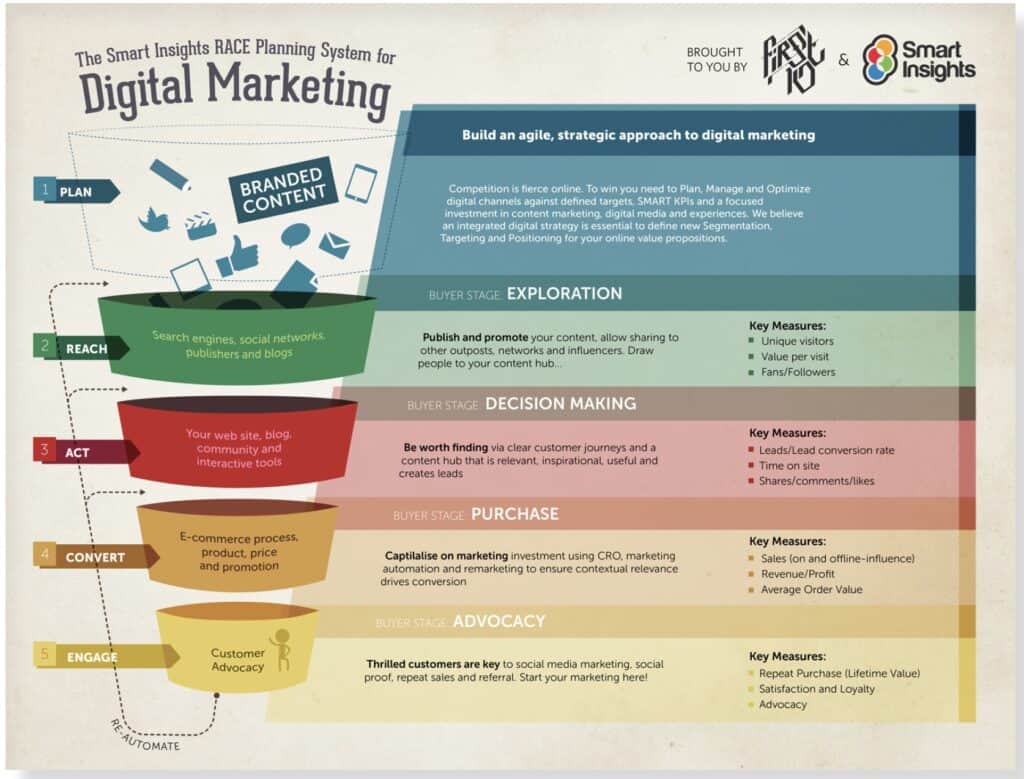
1. RACE Models by Dave Chaffey: (Reach, Act, Covert and Engage)
R = Reach Stage:
Explore and access to audience as much as possible, either as Mass or Niche Market. Mix media are adopted and may applied based on the product and service category.
A = Act Stage:
Expect to gain any kind of interaction including More information, contact fill, or Chat with brand. A trust platforms or channels are compulsory, as aim to gain data privacy from prospect customer
C = Convert Stage:
Looking at purchased or Re-purchased, contact point is highly convincible and connectable. However, type of Business may require different information such as B2B might concern on FACT or service, where B2C more of product quality, promotion, and review.
E = Engage Stage:
Retain the existing customer to build brand loyalty or increase the repurchasing rate or even upsell. Highly recommend focusing on loyalty program or Marketing automation might require for faster respond for satisfaction concerned.
2.Ansoff Matrix Product vs New Market Frameworks
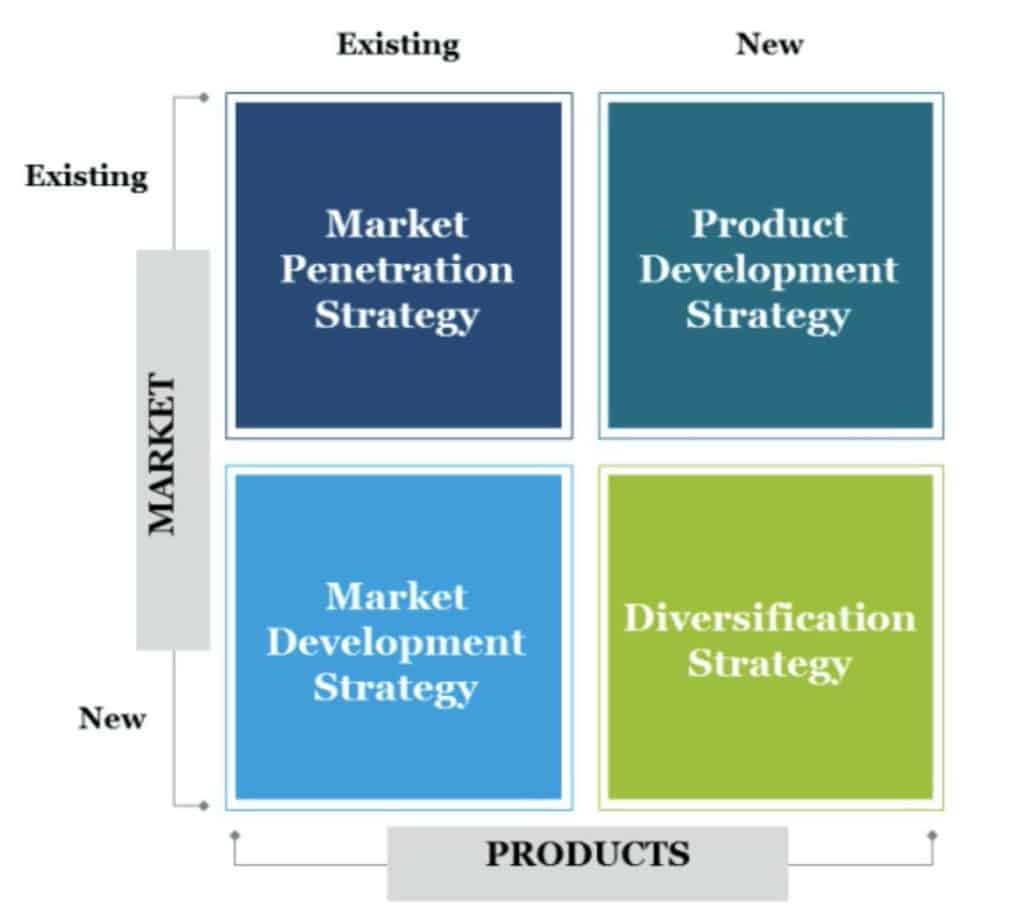
Matrix was initiated by Mr. Harry Igor Ansoff, two-by-two grid boxes strategy to evaluate the relative attractiveness of growth both existing and new, as horizontal represent “PRODUCT” conjunction with vertical as “Market”, let deep explore on strategic evaluation meaning from grid:
Both New, product and Market – Diversification strategies, high opportunity as well as risk when you spread out from existing product and market which also could get excessive rewards as well.
New Product by Existing Market – Product Development Strategies, initiated or developed new product as extended or new variant which more aim to achieve market’s growth. For example, there are the digital products, new delivery, and usage models such as Grab entering the motorbike public transportation and Agoda with the digital competition capabilities entering the hotel booking agencies market. There is also the transformation in revenue model (subscription, peruse, bundling) like Adobe creative software to Adobe Creative Cloud having the recurring revenue from the subscription model.
Both Product and Market are existing – Market Penetration, exploring and would match to increase market share, where we are looking at sell increase achievement.
Existing Product by New Market – Market Development, offering existing in other market segmentation. Product with unique technology or innovative would be beneficial from this strategies. For example, Netflix leverages the improved internet speed, which people could access without limit, to provide the video streaming from the DVD assets it has. Hilti, which once provided construction products, turns to rent them out and, provide the online fleet management service. Globalizing the existing product and service to add value in other countries could be applied also.
3. PR Smith’s SOSTAC® Planning Framework
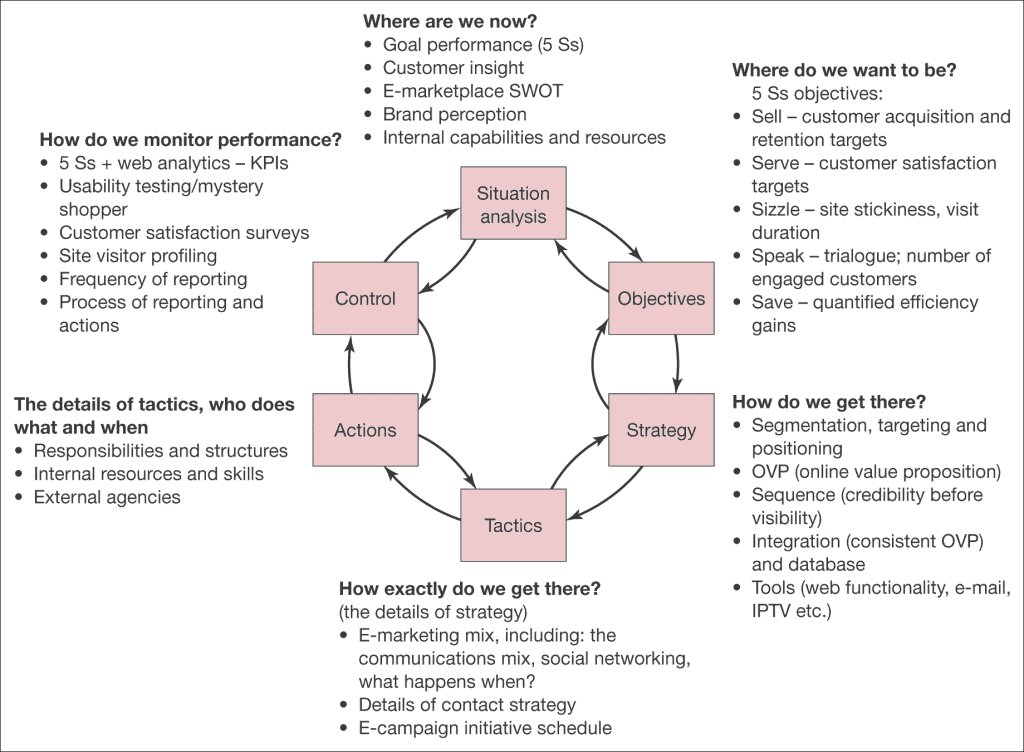
one of the great analysis frameworks that help understating from existing situation, Goal, strategy, execution and KPI. So what are SOSTAC® stands for:
- S – Situational Analysis: Analyze the current situation
- O – Objective: Set the clear objective
- S – Strategy: Targeting the customer, creating the value proposition
- T – Tactics: Tactics for advertising and direct marketing
- A – Actions: Operation planning, human resource evaluation
- C – Control: KPI, monthly and quarterly analysis and usability testing
View more PR Smith’s SOSTAC® Planning Framework
4. PDCR Digital Marketing framework
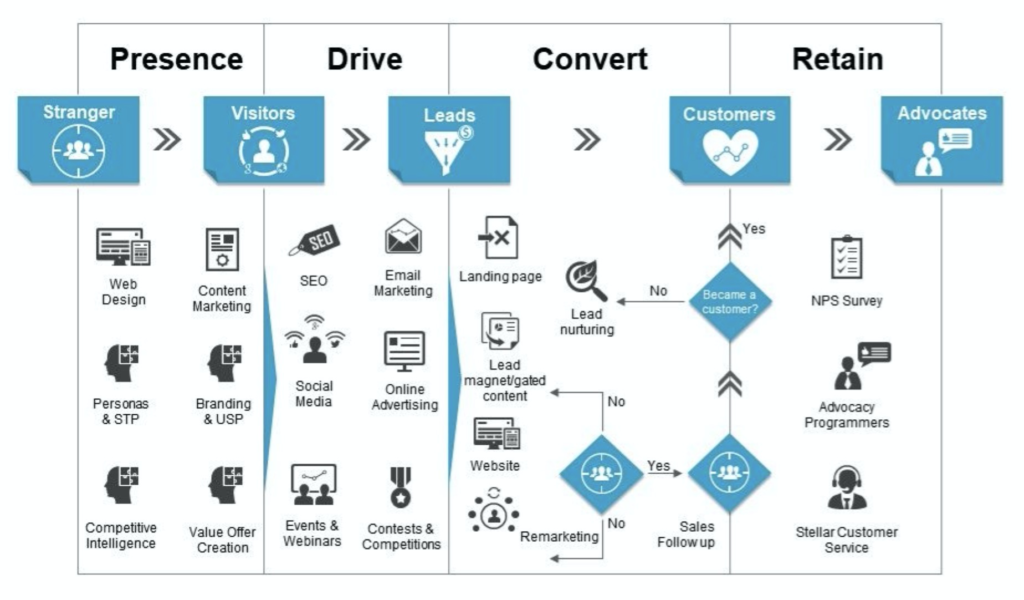
Focus in marketing funnels and each stage’s touchpoints.
Presence is where “USER” those between Stranger and Visitors which brand is still not familiar to them.
Drive, aim to convert visitors to leads as much as possible by any form of motivation such as give away. These channels are for communicating and passing the content to attract possible leads.
Convert focuses purchase conversion. The sales pipeline for CRM or marketing automation for converting or closing sales.
Retain includes channels to interact with the existing customers. Most are CRM (specifically loyalty and advocacy) to maintain satisfaction and create confidence in the brand for repurchasing.
5. Anicca’s A10 Digital Marketing Framework

A1 – Analysis: Figure out the benchmark and baseline for the marketing activities such as traffic, engagement quality, conversions and scores of after-sales services.
A2 – Aims: Determine the marketing objectives, quantify the goals which could be broken down by digital presence and channels, and break down the goals based on the customer funnel.
A3 – traffic or audience gathering: Data can be collected from the ads platform, then verify behavioral insight via marketing analytics such as characteristics, interests and demographics of the user groups from each channel. This will later use to create segmentation or micro-segmentation based on the product category.
A4 – Assets: All digital assets are collected and defined including Branding assets (documents, procedure and brand guidelines), Owned channel assets (website and mobile application), Social media platforms, content, promotional material, ads, remark for learning, and MarTech tools.
A5 – Awareness: Tactics are placed in each channel according to the plan with concise measurement. The number of increased reaches in social media and the increased in the organic views and impressions in search marketing channels are the example.
A6 – Acquisition: The paid media (SEM, Display and Social Ads) are consistently optimized. The owned media are effectively managed and controlled with search engine optimization (SEO), content marketing, social media and email marketing. For earned media, public relations, influencers, outreach marketing, and community management are executed to support customer engagement. IoT, Voice Search and chatbots are also the technical channels needed to be planned.
A7 – Actions: Clear understanding of all actions such as interactions or conversion in detail. Actions and conversions in the digital channels could also be categorized as
Macro-conversions (sales and leads) and Micro-conversion (Signup E-newsletter).
“Goals”, designate action to set a good guide for marketing analytics (analytic tool such as Google Analytics), for example the goal is to count whenever Thank You page is successfully loaded after the user completed the form. Each step of the funnel in the customer report could show the drop-off, and Event is the action detected at the webpage level such as the clicks on any buttons or play video.
A8 – Attention (and retention): Aftersales service or the activities for repurchasing.
A9 – Advocacy: The existing customers are taken care of for brand loyalty to generate reviews or generate positive, hopefully, mentions, and product recommendations.
A10 – Assessment: All important marketing activities and platforms are consistency examined such as analytics in those website, app, and ad platform, focusing on conversion, attribution and what assist conversion and whether Data integration across platforms or not, and make sure reporting and data visualization are implemented as well.
6. HBR marketing strategy formation
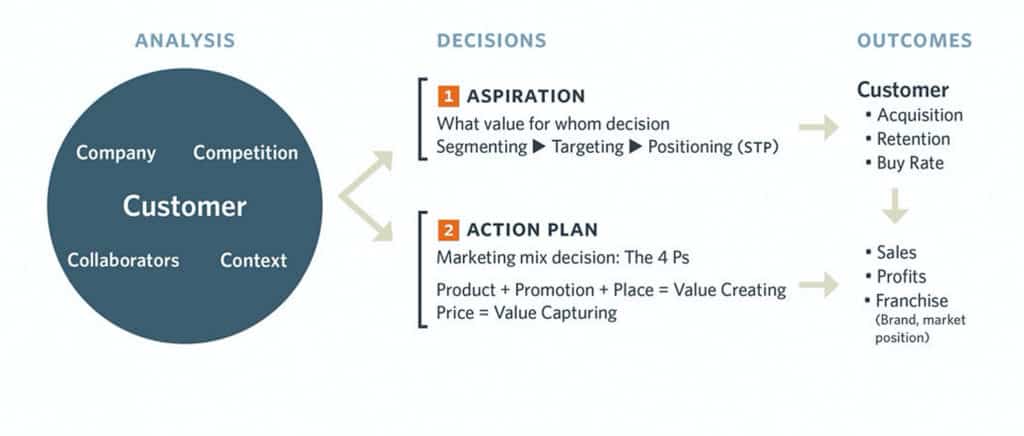
Defined 10 Cs as the mindset of modern marketing. And grouped by key elements which are Self (individual mindset), Team (Team Mindset) and Company (Company Mindset).
- Customer-centric (Self): Marketers must act and think as like the customers, themselves.
- Commercially focused (Self): Marketers find the balance between customer and revenue for the company.
- Capable (Self): always keep develop to their knowledge and abilities to improve themselves.
- Committed (Team): To execute 3C’s in Self, and set achievement with team.
- Confident (Team): Marketers, as part of team to develop self-expertise.
- Curious (Team): Always thirst for more knowledge and open to any opinion as learning.
- Creative (Company): Creativity in work and problem-solving
- Challenging (Company): Challenge to Self, team and as Company process for better or improving.
- Collaborative (Company): ability and creativity to drive cross-functional as team.
- Connected (Company): All teams’ goals are shared, both personal values and corporate as business values.
7. Econsultancy’s 10Cs of Modern Marketing
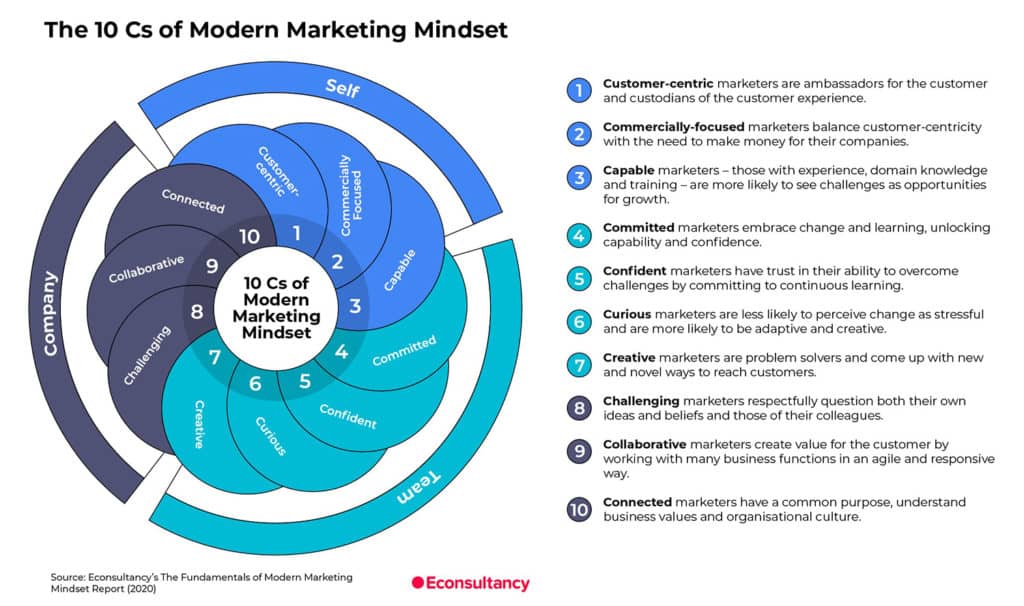
Econsultancy defines 10 Cs as the mindset of modern marketing mindset. Also, they are surrounded by three outer circles as the key elements for marketing which are Self, Team and Company.
- Customer-centric (Self): Marketers must act as the diplomat to think like the customers
- Commercially focused (Self): Marketers find the balance between representing the customer and generating revenue for the company.
- Capable (Self): To find such balance, marketers rely on their knowledge and abilities to improve themselves.
- Committed (Team): To execute 3C’s in Self, marketers have to set the contract with the team on what the team is going to achieve
- Confident (Team): Marketers have to be confident and pay attention to self-development
- Curious (Team): Marketers have to seek knowledge and be open to any questions from working
- Creative (Company): The company must apply creativity to solve the problem and improve solutions along the way of working for developing products and services that respond to customers’ behaviour.
- Challenging (Company): Marketers and also companies have to challenge themselves to modify the working process and structure.
- Collaborative (Company): Having creativity and challenges motivate employees to be capable of collaborating with the cross-functional team.
- Connected (Company): All teams’ goals are shared from the personal values to the business ones
8. SMART marketing objectives
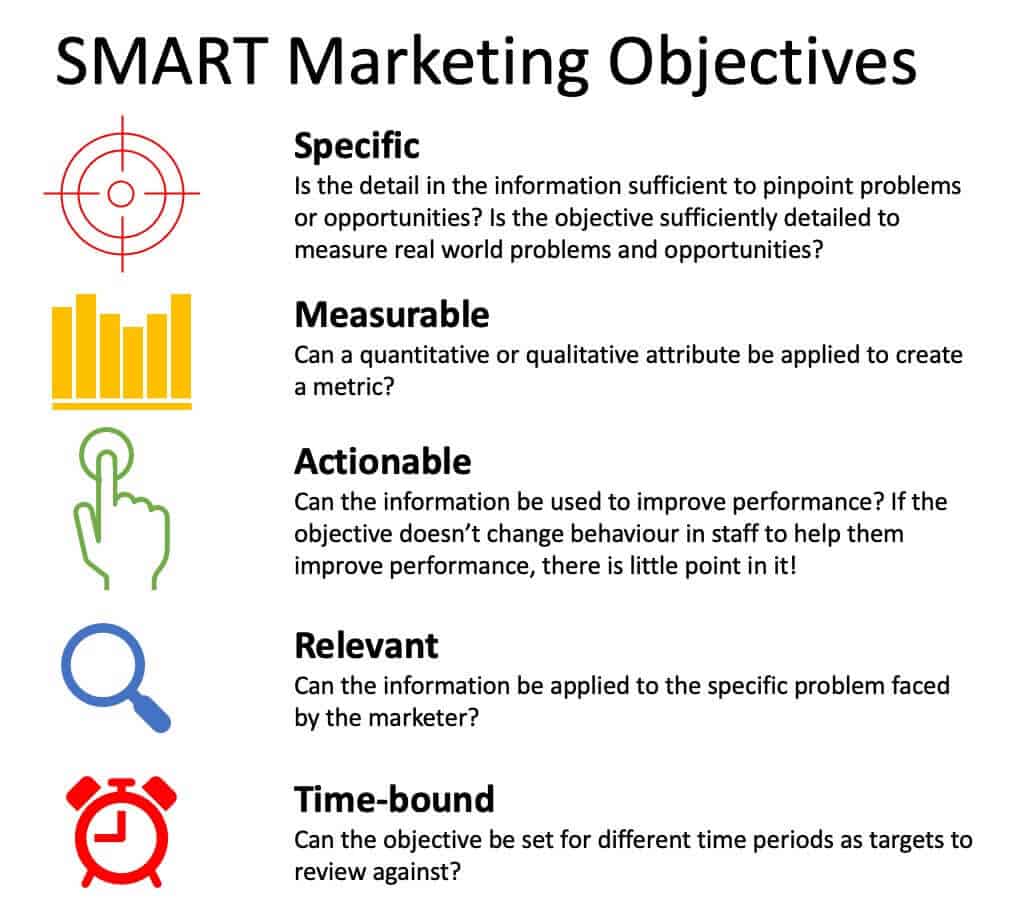
another important frameworks in all Marketing funnels aspect and as well as digitally which include;
- Specific: adequate validate data to clarify problem or verify market opportunities
- Measurable: from “Specific” to “Measurable” which must measure both qualitative and quantitative.
- Actionable: collected data must improve with effectiveness marketing activities.
- Relevant: Relevancy of collected data to meet and reflect to that problem or finding
- Time-bound: applicable of data to period of time.
To conclude, SMART marketing objectives is a frameworks for operation rather roadmap overview.
Need us to help you reached thai marketer ?
- Localize Marketing Consult
- Create brand awareness to thai marketer
- Lead generation campaign
- Private consult about martech competitive advantage
Line: baron66
Email : [email protected]
Reference
https://www.smartinsights.com/digital-marketing-strategy/race-a-practical-framework-to-improve-your-digital-marketing/
https://corporatefinanceinstitute.com/resources/knowledge/strategy/ansoff-matrix/
https://sostac.org/
https://prsmith.org/sostac/
https://anicca.co.uk/blog/introducing-aniccas-a10-digital-marketing-framework-to-develop-your-digital-marketing-strategy/
https://www.equinetacademy.com/what-is-digital-marketing/
https://www.smartinsights.com/goal-setting-evaluation/goals-kpis/define-smart-marketing-objectives/
https://econsultancy.com/introducing-the-10cs-of-modern-marketing-mindset/
- Tik Tok Analytics & Listening that will rock your content - 05/04/2022
- All Classic Marketing Frameworks from 1957 – 2021 - 21/10/2021
- Parabola.io:Automated & ETL Data - 09/02/2021
